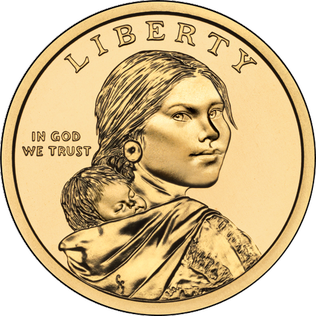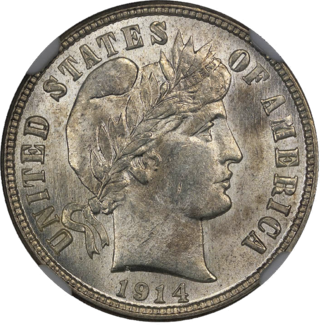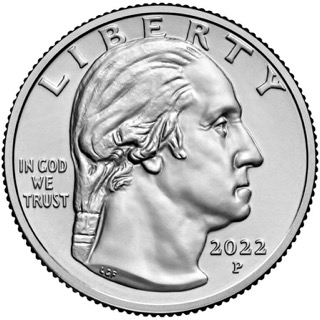External links
- 2005 Obverse Design, from the U.S. Mint Archived 2011-08-21 at the Wayback Machine
- NLM Artist Designs New Nickel, from the NIH Record
- At Home With Joe Fitzgerald - His 5 Cents' Worth from The New York Times
Joe Fitzgerald | |
|---|---|
| Born | Washington D.C., U.S. |
| Known for | Coin design |
Joe Fitzgerald (born in Washington, D.C.) is an American artist and graphic designer. He is one of two designers of the 2005 United States nickel. His design, President Jefferson with Handwritten Liberty, appears on the obverse of that coin.
Fitzgerald is a painter, who has had numerous one-man-shows. His work has also been exhibited in the U.S. State Department's Art in Embassies Program. He was one of twenty-four artists selected to create new designs under the United States Mint's Artistic Infusion Program.
Fitzgerald retired in 2005 as the chief of graphics at the National Library of Medicine in Bethesda, Maryland. While with the Library, he led or participated artistically in numerous projects and exhibitions over the years, such as the Turning the Pages series of rare-book animations and the Visible Human Project. He is also known as a public speaker. His wife, Jean Fitzgerald, has retired from her position as an archivist with the Smithsonian Institution.
He is listed in Who's Who and Who's Who in American Art.

The cent, the United States one-cent coin, often called the "penny", is a unit of currency equaling one one-hundredth of a United States dollar. It has been the lowest face-value physical unit of U.S. currency since the abolition of the half-cent in 1857. The first U.S. cent was produced in 1787, and the cent has been issued primarily as a copper or copper-plated coin throughout its history. Due to inflation, pennies have lost virtually all their purchasing power and are often viewed as an expensive burden to businesses, banks, government and the public in general.

A nickel is a five-cent coin struck by the United States Mint. Composed of cupronickel, the piece has been issued since 1866. Its diameter is 0.835 inches (21.21 mm) and its thickness is 0.077 inches (1.95 mm).

The Liberty Head nickel, sometimes referred to as the V nickel because of its reverse design, is an American five-cent piece. It was struck for circulation from 1883 until 1912, with at least five pieces being surreptitiously struck dated 1913. The obverse features a left-facing image of the goddess of Liberty.

The Mercury dime is a ten-cent coin struck by the United States Mint from late 1916 to 1945. Designed by Adolph Weinman and also referred to as the Winged Liberty Head dime, it gained its common name because the obverse depiction of a young Liberty, identifiable by her winged Phrygian cap, was confused with the Roman god Mercury. Weinman is believed to have used Elsie Stevens, the wife of lawyer and poet Wallace Stevens, as a model. The coin's reverse depicts a fasces, symbolizing unity and strength, and an olive branch, signifying peace.

Charles Edward Barber was an American coin engraver who served as the sixth chief engraver of the United States Mint from 1879 until his death in 1917. He had a long and fruitful career in coinage, designing most of the coins produced at the mint during his time as chief engraver. He did full coin designs, and he designed about 30 medals in his lifetime. The Barber coinage were named after him. In addition, Barber designed a number of commemorative coins, some in partnership with assistant engraver George T. Morgan. For the popular Columbian half dollar, and the Panama-Pacific half dollar and quarter eagle, Barber designed the obverse and Morgan the reverse. Barber also designed the 1883 coins for the Kingdom of Hawaii, and also Cuban coinage of 1915. Barber's design on the Cuba 5 centavo coin remained in use until 1961.

The Sacagawea dollar is a United States dollar coin introduced in 2000, although not minted for general circulation between 2002 and 2008 and again from 2012 onward because of its general unpopularity with the public and low business demand for the coin.

The Indian Head cent, also known as an Indian Head penny, was a one-cent coin ($0.01) produced by the United States Bureau of the Mint from 1859 to 1909. It was designed by James Barton Longacre, the Chief Engraver at the Philadelphia Mint.

The Walking Liberty half dollar is a silver 50-cent piece or half dollar coin that was issued by the United States Mint from 1916 to 1947; it was designed by Adolph A. Weinman, a well-known sculptor and engraver.

The Standing Liberty quarter is a 25-cent coin that was struck by the United States Mint from 1916 to 1930. It succeeded the Barber quarter, which had been minted since 1892. Featuring the goddess of Liberty on one side and an eagle in flight on the other, the coin was designed by American sculptor Hermon Atkins MacNeil.

John F. Flanagan was a sculptor who was widely known for his statuary and plaquettes but recognized foremost for his designs of coinage and commemorative medals. Among his best known designs are the obverse (front) and reverse of the United States quarter dollar featuring the profile of George Washington, a coin that has been in continuous circulation with some modifications since 1932.

The Buffalo nickel or Indian Head nickel is a copper-nickel five-cent piece that was struck by the United States Mint from 1913 to 1938. It was designed by sculptor James Earle Fraser.

The Barber coinage consists of a dime, quarter, and half dollar designed by United States Bureau of the Mint Chief Engraver Charles E. Barber. They were minted between 1892 and 1916, though no half dollars were struck in the final year of the series.

The Jefferson nickel has been the five-cent coin struck by the United States Mint since 1938, when it replaced the Buffalo nickel. From 1938 until 2004, the copper-nickel coin's obverse featured a profile depiction of Founding Father and third U.S. President Thomas Jefferson by artist Felix Schlag; the obverse design used in 2005 was also in profile, though by Joe Fitzgerald. Since 2006 Jefferson's portrayal, newly designed by Jamie Franki, faces forward. The coin's reverse is still the Schlag original, although in 2004 and 2005 the piece bore commemorative designs.

The Washington quarter is the present quarter dollar or 25-cent piece issued by the United States Mint. The coin was first struck in 1932; the original version was designed by sculptor John Flanagan.
Alex Shagin is a coin designer.
Donald Nelson Everhart II is an American coin and medal engraver-medalist, and sculptor who has worked for the private Franklin Mint, as a freelance designer, and since 2004 has worked for the United States Mint in Philadelphia. With over 1,000 models for coins and medals attributed to him as of 2008, he is still at the prime of his career creating the bas-relief models for these and similar sculptural objects. His coin designs are in the pockets of American citizens, and despite his late arrival to the series of the popular U.S. Statehood Quarters, he has designed and modeled three State's unique reverse designs, modeled three others, and six U.S. commemorative coins. His portrait of President William Clinton was chosen for Clinton's second term Inaugural Medal. Among his other medal creations are six Congressional Gold Medals for the U.S. Mint, seven Society of Medalists issues, twelve calendar medals, and other models for private medal makers, as well as cast art medals.

Joel Iskowitz is an American designer, book illustrator, print artist and stamp, coin and medal designer. From an initial interest in medical illustration, this graphic artist has branched to other fields. He specializes in highly realistic art resulting from extensive research to make his designs as accurate as possible. His philatelic (stamp) designs, he once said, "must be super accurate and well documented, for if you get so much as an animal's tuft of fur out of place on a philatelic design you will hear from someone critical of your design." Among his coin designs are the reverse of the 2009 Lincoln Bicentennial penny, 2008 Arizona State Quarter, 2009 District of Columbia Quarter, and the 2016 Nancy Reagan First Spouse Gold Coin. In 2011 he was inducted into the Hunter College Hall of Fame. A major address on his career as a designer of commemorative coins and medals, at the Museum of American Finance in October 2015, was aired on C-SPAN.

The Lincoln cent is a one-cent coin that has been struck by the United States Mint since 1909. The obverse or heads side was designed by Victor David Brenner, as was the original reverse, depicting two stalks of wheat. The coin has seen several reverse, or tails, designs and now bears one by Lyndall Bass depicting a Union shield. All coins struck by the United States government with a value of 1⁄100 of a dollar are called cents because the United States has always minted coins using decimals. The penny nickname is a carryover from the coins struck in England, which went to decimals for coins in 1971.

James Barton Longacre was an American portraitist and engraver, and the fourth Chief Engraver of the United States Mint from 1844 until his death. Longacre is best known for designing the Indian Head cent, which entered commerce in 1859, and for the designs of the Shield nickel, Flying Eagle cent and other coins of the mid-19th century.
Cassie Maeve McFarland is an American graphic artist based out of California. She is best known as the creator of the winning design for the common obverse of the 2014 National Baseball Hall of Fame commemorative coin program.